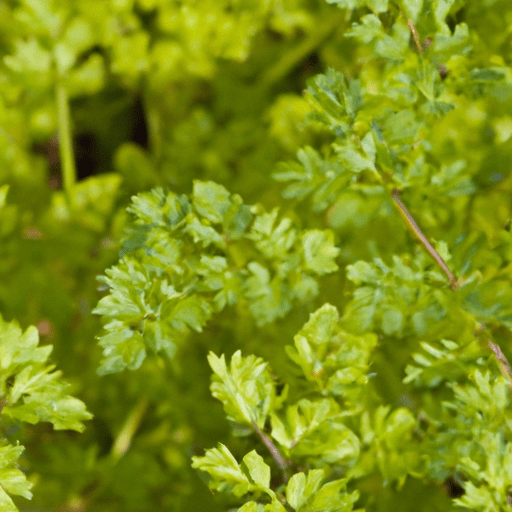Discovering Chervil: A Delicate Herb with a Subtle Sophistication
Are you looking to elevate your culinary creations with a touch of elegance and finesse? Meet chervil, the unsung hero of the herb garden. With its delicate appearance, subtle flavor, and versatile nature, this herb is a must-have in any aspiring chef’s kitchen. In this blog post, we’ll dive into the world of chervil, exploring its taste, common uses in cooking, nutritional value, and intriguing history. Let’s embark on a journey of flavor and discovery!
Taste Profile: Subtle Bliss
Chervil, often described as a cousin to parsley with a hint of anise, offers a delightful and refreshing experience for your taste buds. Its delicate leaves possess a mild, slightly sweet flavor, reminiscent of fresh-cut grass and licorice. This unique combination adds a delicate yet vibrant touch to any dish it accompanies, making it an ideal herb for imparting a subtle sophistication.
Common Uses: A Versatile Herbal Companion
Chervil’s versatility shines through as it effortlessly enhances a wide range of dishes. Its delicate nature makes it a perfect accompaniment for delicate flavors, such as fish, shellfish, and light vegetable dishes. Sprinkle chopped chervil onto your salads, soups, and dressings for an instant burst of freshness. It also adds a vibrant touch when used as a finishing herb on roasted meats or grilled vegetables.
Additionally, chervil plays a vital role in traditional French cuisine, specifically in the classic fines herbes blend. When combined with parsley, chives, and tarragon, it adds a harmonious balance, enhancing the flavors of sauces, omelettes, and creamy dressings.
Nutritional Powerhouse: A Healthy Culinary Companion
Beyond its exquisite taste, chervil also brings a wealth of nutritional benefits to the table. Packed with vitamins A, C, and K, this herb contributes to a healthy immune system, radiant skin, and bone health. It also contains essential minerals like iron, calcium, and potassium, which support proper bodily functions. Incorporating chervil into your meals not only enhances the flavor but also boosts the nutritive value of your dishes.
A Glimpse into History: From Ancient Roots to Modern Kitchens
Chervil has a rich history dating back centuries. Believed to be native to the Mediterranean region, it was highly cherished by the Greeks, Romans, and Egyptians for both culinary and medicinal purposes. Its delicate leaves were often used in traditional remedies to treat digestion-related issues and rejuvenate the body.
Chervil’s popularity continued to flourish during the Middle Ages when it was considered a symbol of love and associated with festivities. It gained prominence among European nobility for its delicate allure and was included in lavish banquets and royal feasts.
Fun Facts
- Chervil’s scientific name, Anthriscus cerefolium, is derived from Greek, where “anthriscus” means “to twist,” alluding to the curly nature of its leaves.
- Chervil’s delicate nature makes it challenging to store for an extended period. Consider cultivating it in your own herb garden for a steady supply of fresh leaves.
- In traditional folklore, it was believed that consuming chervil could ward off evil spirits and protect against witchcraft.
Whether you are an aspiring chef or a food enthusiast looking to explore new flavors, chervil is an herb that should not be overlooked. Its subtle yet sophisticated taste, versatility in the kitchen, and rich history make it a valuable addition to any dish. So, the next time you want to add an elegant touch to your culinary creations, reach for a bunch of chervil and elevate your cooking to a whole new level. Happy cooking!
Chervil
- Origin: Chervil, also known as Anthriscus cerefolium, is a herb originating from the Mediterranean region and is a member of the carrot family (Apiaceae). It is believed to have originated in the eastern Mediterranean and has been used in culinary practices for centuries.
- Common Uses: Chervil is commonly used as a culinary herb in French cuisine. It has delicate, fern-like leaves and a mild, subtle flavor that is often compared to a blend of parsley and anise. Chervil is most frequently used as a finishing herb, added to dishes like soups, stews, sauces, and salads just before serving to enhance their flavor and aroma.
- Nutritional Benefits: Chervil is a low-calorie herb that is rich in various vitamins and minerals. It contains notable amounts of vitamin C, vitamin A, vitamin K, iron, magnesium, and potassium. However, due to its typical usage in small quantities, it is not a significant source of these nutrients.
- Unique Properties and Historical Significance: Chervil has traditionally been associated with various medicinal properties. It was used in ancient times to treat digestive issues, as well as to purify the blood. Chervil was also considered a symbol of sincerity and good fortune in some cultures. Furthermore, it was believed to ward off evil spirits and was used in protective rituals. Although not as widely known today, chervil still holds significance in traditional herbal medicine practices.




Use the share button below if you liked it.
It makes me smile, when I see it.